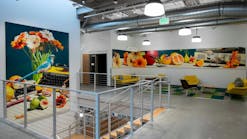As LED technology advances, it is paving the way for new opportunities which may support a more sustainable lighting future. One of the areas of opportunities seems to be with lighting controls. Here are a few thoughts on the current state of controls and the drivers and barriers in this area of the lighting industry.
First off, “no wires” is a very desirable feature in lighting controls. In this world of technology, people don’t want to deal with wires and circuitry issues. They just want a “plug and play” solution. The less they have to think about how to put something in, the more likely they are willing to pay for this efficiency. The demand for wireless lighting control solutions is likely to grow as technology in the lighting industry advances. For street lights, controls topologies that are popular are wireless mesh and tree network approach.
Controls may have faster adoption in commercial, industrial, and outdoor applications rather than the residential sector. In my opinion, wireless lighting controls will be mostly driven by energy consumption rather than the consumer’s preference to play with color settings. Lighting controls need to prove its viability through the commercial and industrial sector before it can be widely adopted by the residential sector. The residential sector is slower to adopt, especially when it comes to products and services with high price points.
The market also faces interoperability issues. There are currently varying products in the market using various wireless platforms such as WiFi, Bluetooth, and ZigBee. The industry seems to be demanding some sort of uniformity or standard to provide interoperability between lighting products to ease customer frustration, but it might be too soon for standards. Establishing standards on controls before the market works out the kinks in products and designs might be premature. Having better products on the market that have fewer bugs will make for a better rate of market adoption than products that are confined to standards (which may or may not work) at such an early stage.
The major markets to focus on at this early stage for LED lighting controls should be the commercial, industrial, and outdoor markets. There are also regulatory drivers favoring installation of controls in these sectors. Many states are advocating for lighting controls in buildings to lower energy consumption. Starting this year in California, projects filing for building permits will need to have lighting controls. It may be just a matter of time before controls become a regulatory requirement in other states.
Here are a few recent product releases in the commercial sector:
Company | Application | Product Information |
DainTree Networks with LG Electronics | Commercial | LED troffer fixture and retrofit Kits with ZigBee communication |
Cree’s SmartCast | Commercial | Available in LED troffers, Linear Luminaires and Downlights |
Philip’s Lighting | Commercial | Control office fixtures as well as temperature |
Shonika Vijay | Analyst
B.S. in Engineering from the University of California Davis
Shonika Vijay is the analyst for the outdoor and replacement LED market at Strategies Unlimited. She was a consultant in energy efficiency with ADM Associates and DNV KEMA. She conducted evaluation, measurement and verification for utility and state sponsored energy efficiency programs and studies. She completed her Bachelors in Engineering from University of Davis, California





